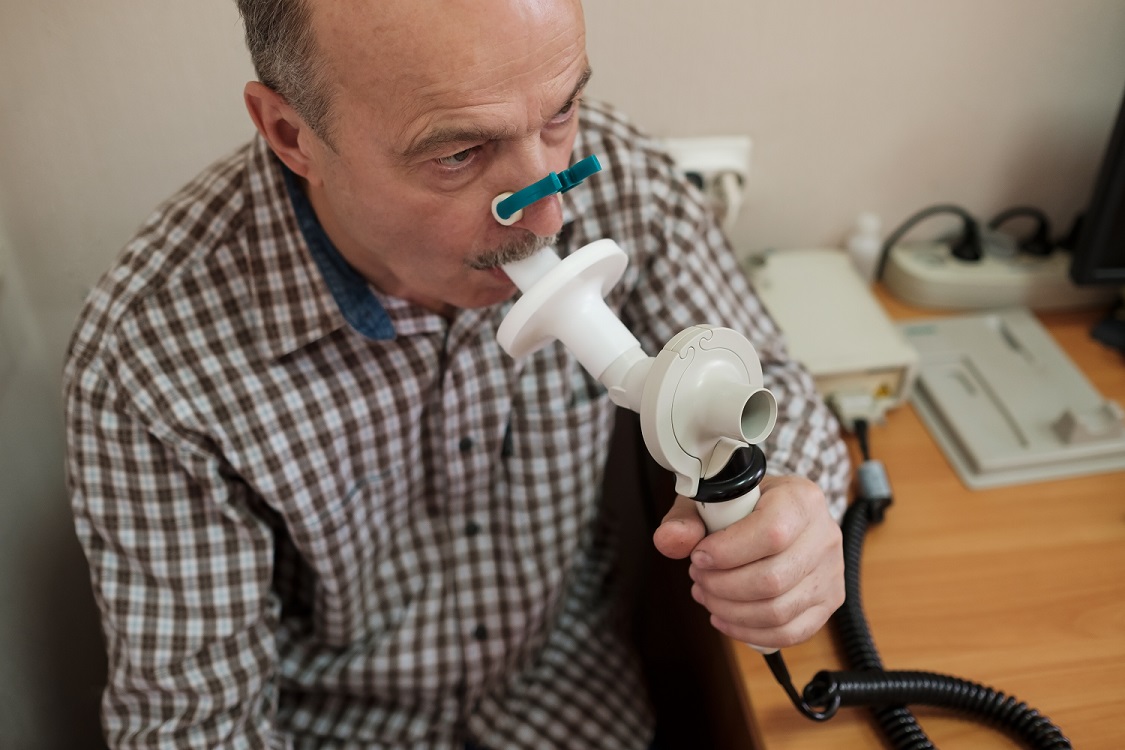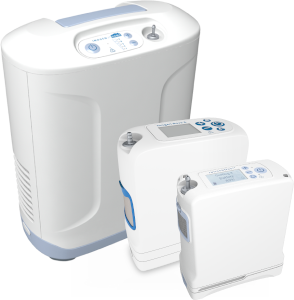What Stages of COPD Require Medical Oxygen?
 Because the key symptom for most patients with chronic obstructive pulmonary disease (COPD) is shortness of breath, oxygen is often used as a treatment. However, it is not always clear to newly diagnosed patients whether medical oxygen treatment will be required or at which COPD stage oxygen therapy is likely to be prescribed. Read on to learn when pulmonologists often decide to prescribe supplemental oxygen to COPD patients.
Because the key symptom for most patients with chronic obstructive pulmonary disease (COPD) is shortness of breath, oxygen is often used as a treatment. However, it is not always clear to newly diagnosed patients whether medical oxygen treatment will be required or at which COPD stage oxygen therapy is likely to be prescribed. Read on to learn when pulmonologists often decide to prescribe supplemental oxygen to COPD patients.
What are the COPD Stages?
COPD is a progressive disease. Over time, the symptoms worsen, causing increasing breathlessness, coughing and more. There are four stages of COPD, each of which is characterized by worsening symptoms.
- Stage one COPD is mild, may present obvious symptoms and signs of COPD. People often dismiss a cough or fatigue as a side effect of smoking or advancing age. In the early stage of the disease, your lungs are still functioning at or above 80% of normal lung capacity.[1,2]
- Stage two COPD Signs of COPD at this stage usually involve a chronic cough. Coughing is the body’s way of naturally removing mucus from the lungs, but with COPD the urge to cough becomes more persistent. It may be worse in the morning, during exercise or when smoking. You may also wheeze, producing a whistling sound when you breathe as air is forced through obstructions in your airways. Stage two COPD is the most common stage for diagnosis, as it is often the first time that symptoms cannot be dismissed.[1,2]
- Stage three COPD is severe, with significantly impacted lung function. People with stage three COPD experience considerably reduced airflow and frequent shortness of breath, along with substantial fatigue as a result of their symptoms. Stage three COPD also comes with more frequent COPD exacerbations (or symptom flare-ups).[1,2]
- Stage four/end stage COPD, is considered to be very severe. At this point, quality of life is significantly impacted. People with stage four COPD typically experience symptoms even at rest. They may lose weight quickly as the body requires extra energy to bring in oxygen, and they will likely experience symptoms resulting from low blood oxygen like headaches and swollen lower legs. Eventually, low blood oxygen can cause confusion, rapid heartbeat, a blue tint in the lips and fingernails (also called cyanosis) and more. At this point, medical intervention is required.[1,2]
The information presented here should give you a better understanding of different COPD stages.
At Which Stage Is Oxygen Therapy Most Likely to be Necessary?
Typically, oxygen becomes more necessary as COPD progresses. As the disease advances, the patient’s lung damage compounds and symptoms become more serious. Shortness of breath will become more frequent and more severe as patients progress through the COPD stages. As shortness of breath gets worse, low blood oxygen levels become a more significant risk, which is when oxygen therapy is most beneficial. A lack of sufficient oxygen can result in hypoxia and hypoxemia—low oxygen levels in the tissue and in the blood—which can have a number of dangerous symptoms and can become a life-threatening situation if allowed to continue untreated. Treating hypoxia and hypoxemia with oxygen therapy can help raise blood oxygen levels back to healthy levels.
There is no specific COPD stage when oxygen therapy is required. Instead, your health care team will keep track of the severity of your symptoms and monitor your blood oxygen levels by regularly measuring your oxygenation with two tests. As a COPD patient, your doctor will likely take a pulse oximetry measurement at every appointment. A pulse oximeter (or pulse ox) uses light frequencies to measure your blood’s oxygen saturation, so it is an easy and noninvasive way to measure your oxygen levels. With a pulse ox measurement, normal oxygen levels are between 95-100%, so anything below that (particularly below 90%[3]) may indicate that you need an arterial blood gas (ABG) study. An arterial blood gas study measures the oxygen and carbon dioxide levels in your blood and tests the pH of your blood, which can give your doctors a bit more information about how well your lungs are functioning. For an ABG, blood must be drawn from an artery rather than a vein, but it can provide excellent information in as little as 15 minutes. A normal blood oxygen level from an ABG should fall between 75 and 100 mm Hg. Your doctor can use these results to determine if your lungs are taking in enough oxygen and expelling carbon dioxide properly, as well as get an overall picture of your respiratory function. If your ABG results are under 75 mm Hg, your doctor will want to take a closer look at how and when your oxygen levels are dropping.[4] If you have consistently low blood oxygen levels, it is likely that your doctor will recommend oxygen therapy.
When Do Pulmonologists Decide to Prescribe Oxygen Therapy?
Pulmonologists typically prescribe oxygen therapy to patients who are unable to treat breathlessness with other COPD treatments like pulmonary rehabilitation, breathing exercises and medications. Once a patient’s COPD has progressed to the point that they begin to show continued shortness of breath even with other regular therapies, pulmonologists are likely to prescribe oxygen therapy to COPD patients who:[5]
- Have oxygen saturation of 92% or below while breathing air
- Experience severe airflow obstruction
- Have experienced cyanosis
- Have swelling in their lower legs caused by low blood oxygen
- Have an increased concentration of hemoglobin in their blood (also called polycythemia)
Be aware that doctors are careful to reserve long-term oxygen therapy for patients who truly need it, because once a patient begins long-term oxygen therapy, they are likely to need it for the rest of their life. Typically, long-term oxygen therapy is given to patients for a minimum of 15 hours per day. Patients may use oxygen therapy overnight if they tend to experience worsening hypoxemia while sleeping. The benefits of long-term oxygen therapy, when used at least 15 hours per day in COPD patients with severe and chronic hypoxemia, has been well documented and it has been shown to increase survival for those patients. Your pulmonologist will carefully explore your pattern of low blood oxygen to determine the right oxygen prescription for you.[6]
How Oxygen Therapy Helps COPD Patients
Oxygen therapy has been a key treatment for COPD patients for many years. Not only does it increase survival when given to patients with significant hypoxemia at least 15 hours per day, but it also helps improve quality of life for patients living with COPD.[6] Patients experiencing frequent dyspnea, or difficult or labored breathing, often experience fear and anxiety associated with their persistent breathlessness. Breathlessness alone is difficult to navigate, but the fear and anxiety associated with it can impede on a patient’s quality of life. Oxygen therapy can help ease that fear and anxiety by giving patients the oxygen they need to breathe easier, as well as providing the assurance that they will have that oxygen available to them when they need it.[7]
The benefits of oxygen therapy become even more profound when patients use a portable oxygen concentrator (POC) for their oxygen therapy. Not only is the overall cost of a portable oxygen concentrator lower than a traditional oxygen tank, but patients can better participate in their daily lives with a POC. Portable oxygen concentrators can also provide patients with increased stamina and exercise tolerance and improved sleep, mental alertness and mood.[8] Inogen’s POCs are designed for the travel needs of our active patients and their lifestyle.
Because of Inogen’s innovative technology and commitment to improving patients’ lives, each Inogen One portable oxygen concentrator model is designed to help meet the needs of medical oxygen patients. Oxygen therapy can help improve COPD patients’ lives. Inogen can help. Find out more today.
Cited Sources
- COPD Stages and the Gold Criteria: 4 Stages Explained (webmd.com)
- End-Stage COPD: Symptoms, Causes, and Coping (verywellhealth.com)
- https://www.ncbi.nlm.nih.gov/pmc/articles/PMC1488761/
- https://www.ncbi.nlm.nih.gov/books/NBK536919
- https://patient.info/doctor/use-of-oxygen-therapy-in-copd
- BTS Guidelines for Home Oxygen Use in Adults
- https://www.webmd.com/lung/copd/oxygen-therapy-for-copd#1
- https://www.ncbi.nlm.nih.gov/pmc/articles/PMC6876135/











